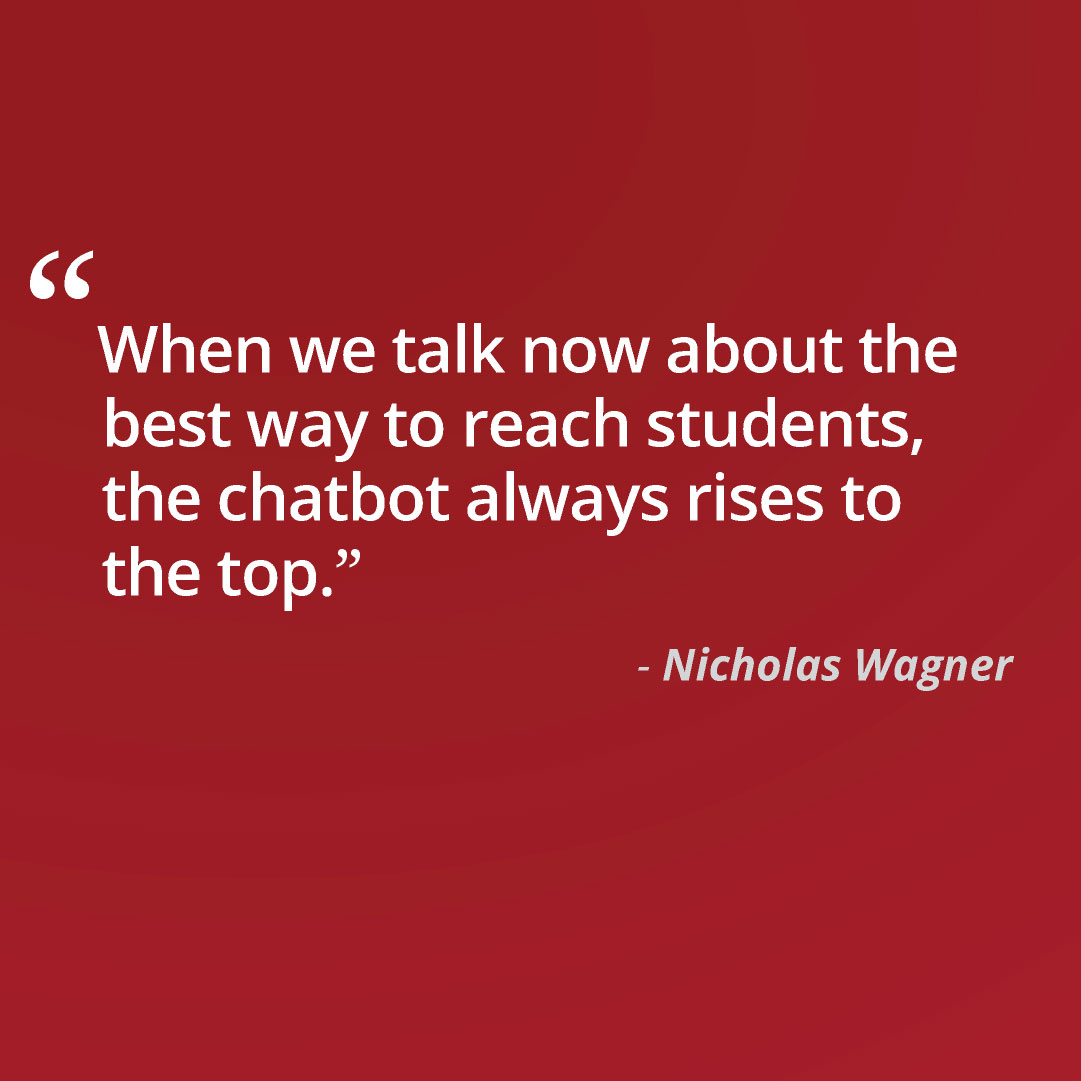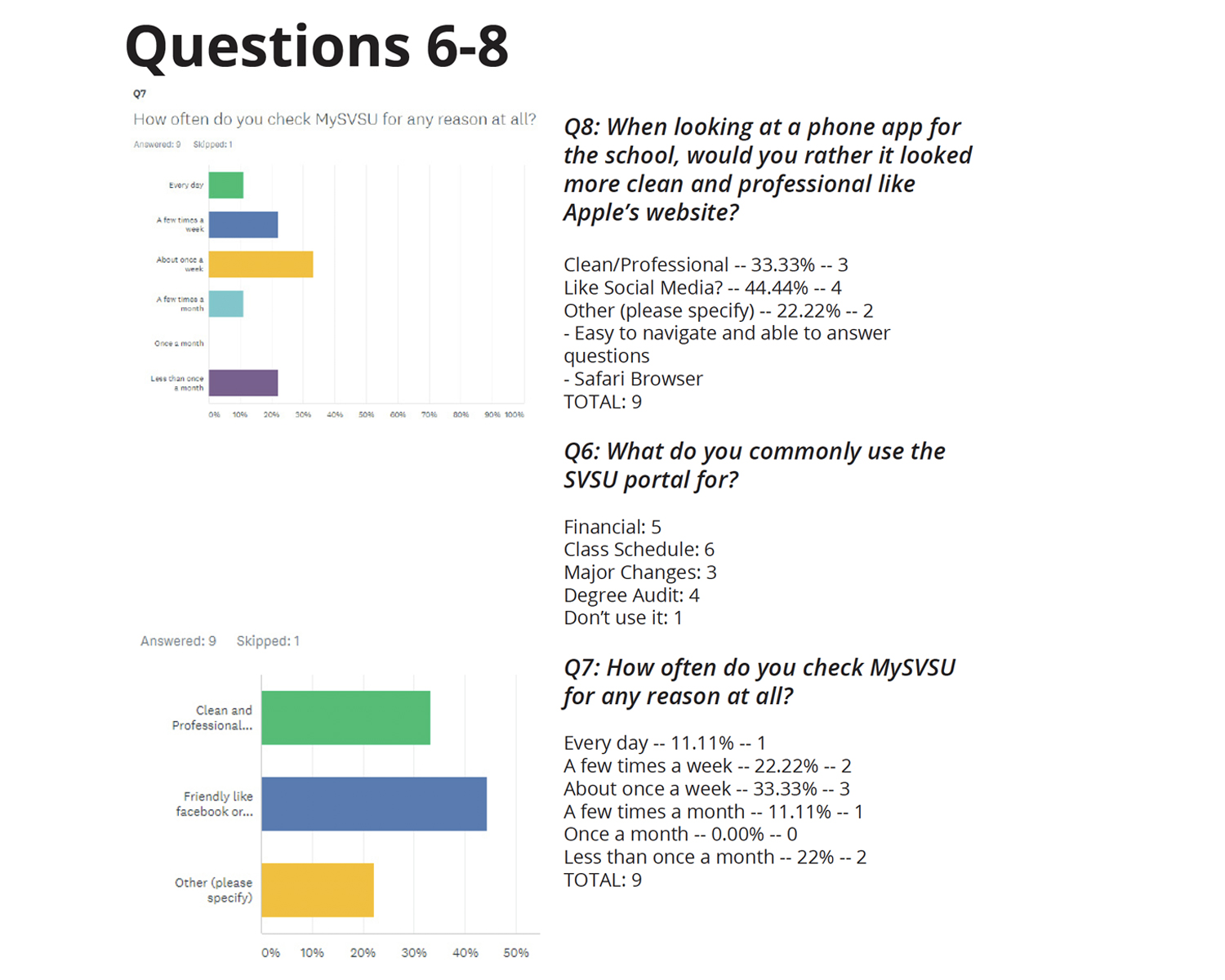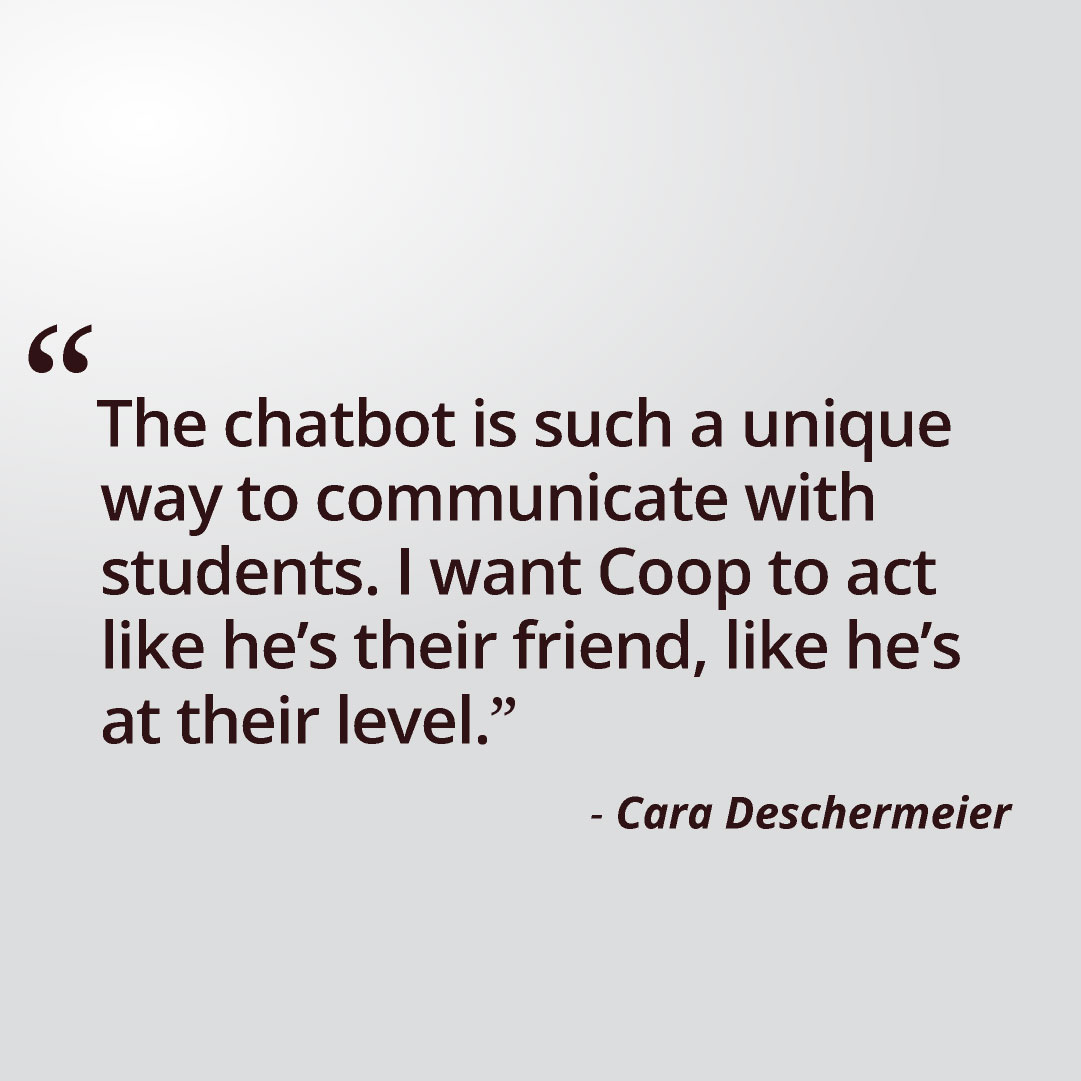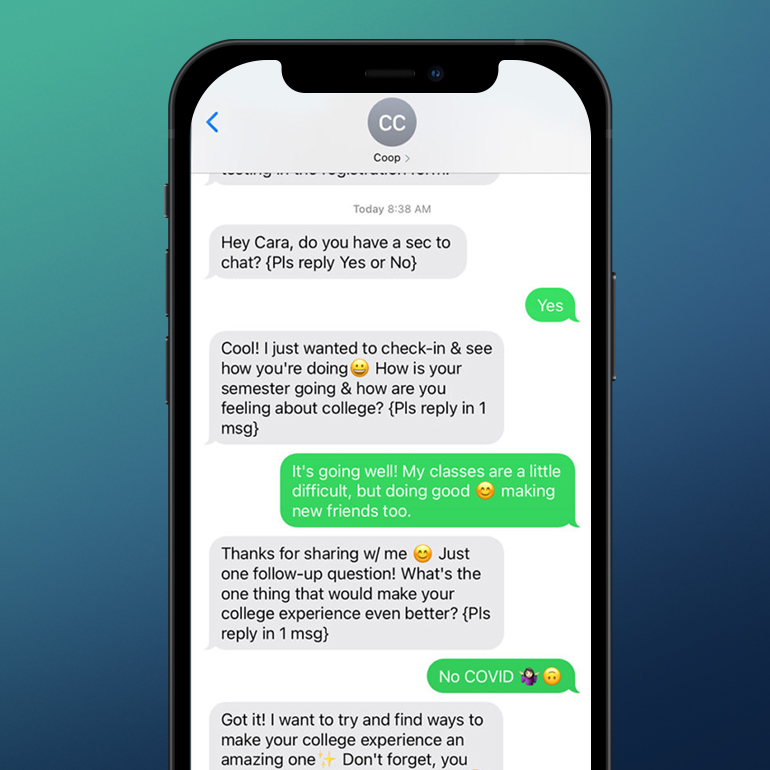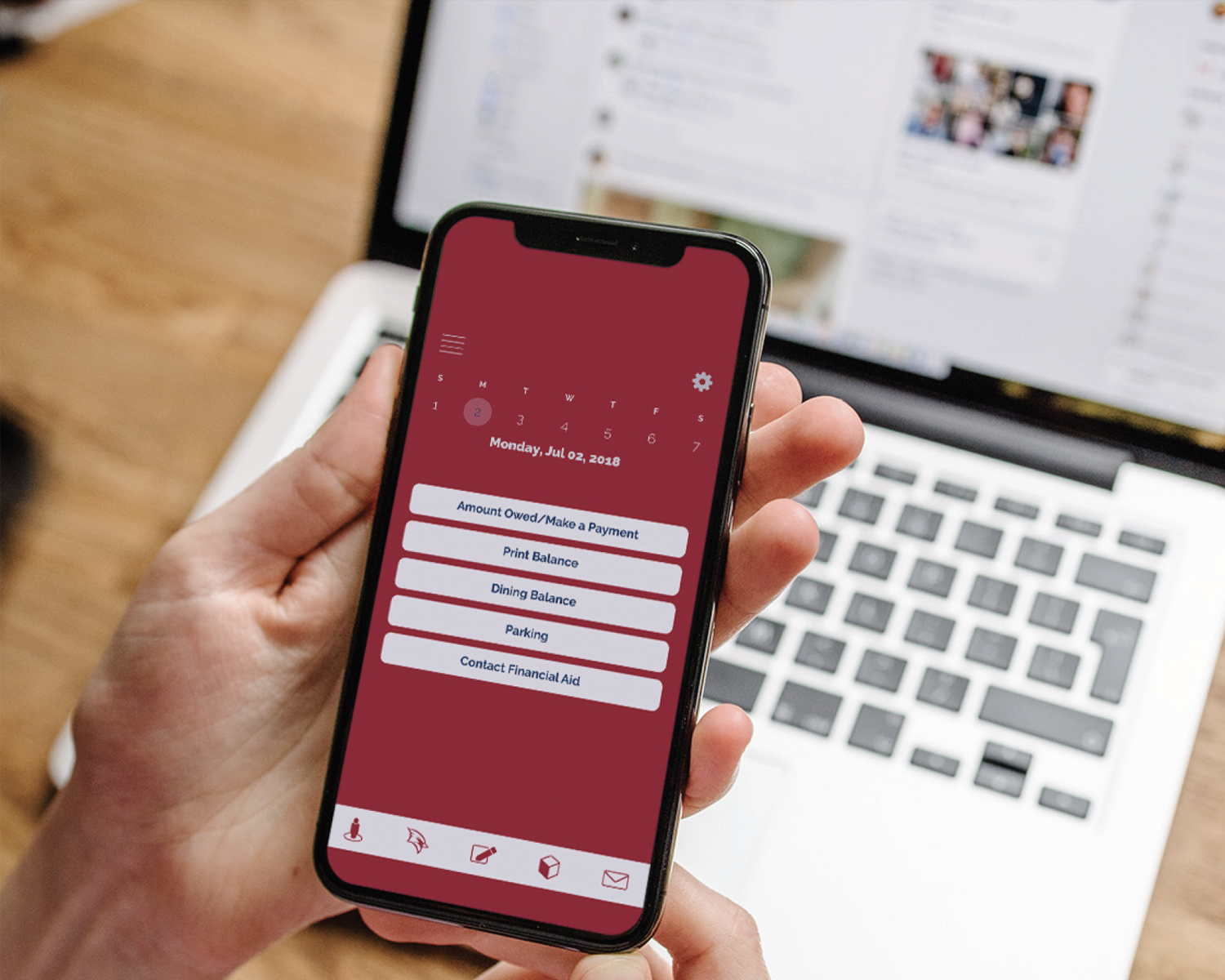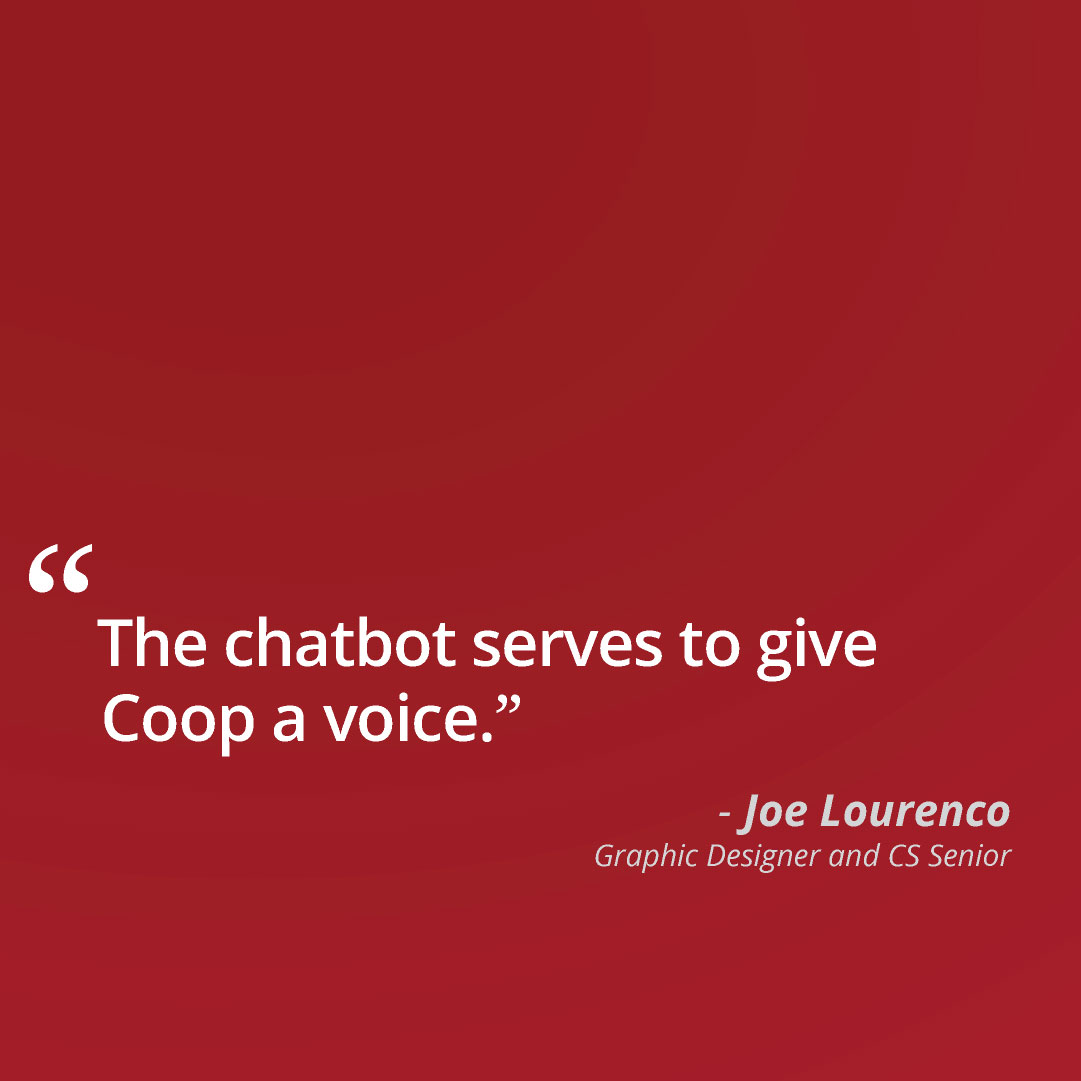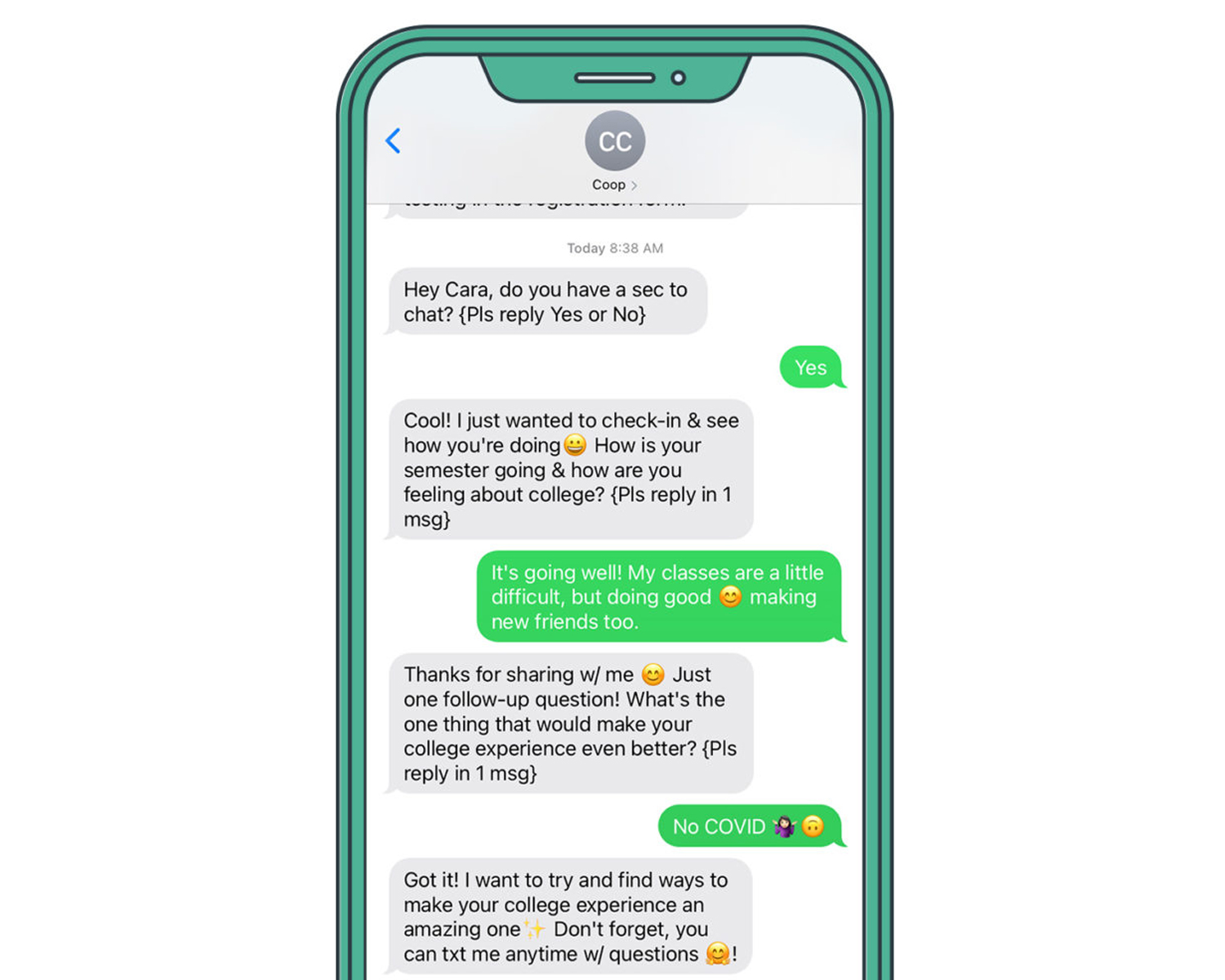Case Study: Knowledge Base for SVSU Chatbot
Problem
C
oop , the chatbot at Saginaw Valley State University (SVSU), offers the University a unique form of internal communication with students. “Coop is a great tool for sending updates and important information, providing a friendly connection, and giving a face to SVSU’s mascot,” says Cara Deschermeier, Assistant Director for the Academic Advisement Center, who has been instrumental in personifying SVSU’s mascot through the chatbot tool.
Nicholas Wagner, Executive Director of Institutional Effectiveness at SVSU, believes the mascot is a convenient way to communicate with students amid the information overload they face on a daily basis. “Students in particular are getting inundated with so much information,” Wagner says. “They are receiving emails, notifications on mySVSU, and even phone calls. It’s so much easier when they’re able to chat back and forth with someone just like they would in a text message. It seems to resonate well with a lot of students.”
In 2019, the chatbot served primarily first-year students and new transfer students. However, when the pandemic hit in March 2020, the chatbot team quickly expanded to all degree-seeking undergraduate students, and now the chatbot reaches the vast majority of SVSU students. The chatbot can target students by year of study, major, registration status, and more so that students receive only the updates that are relevant to them. “We use targeted messaging,” explains Deschermeier. “Sometimes I send a message that relates only to students of a particular major, only to students who live on campus, or only to students who haven’t made a payment. We can easily filter out students to whom the message doesn’t apply. I want to make sure that students are receiving only the information they need.”
Deschermeier and Wagner became interested in launching a chatbot at SVSU after looking at some of the outcomes achieved by different universities that have used a chatbot, especially outcomes related to retention initiatives and financial literacy. They say the bot has cut down on students’ frustration because they no longer have to search the web or look up a phone number when they have a question. Students value the simplicity, ease of use, and their familiarity with a texting-based tool. Moreover, Coop has alleviated pressure for a variety of offices that previously allocated more staff hours to answering students’ phone calls.
Coop’s knowledge base has doubled since Deschermeier got involved with the project. “Coop is built on artificial intelligence,” she explains. “When a student texts the chatbot, it uses its knowledge base to try to find the right answer based on the keywords in the student’s question. If it finds a match within a range of 80% to 100% accuracy, it will give an answer. If it can’t find a match, the bot will just say, ‘I’m not sure. Let me get a human to help.’ In that case, the question is flagged, so I have to go in and train the bot on how to answer it. I not only give the student the right answer, but I get the item in Coop’s knowledge base so that the next time a student asks that question, the process will be automatic.”
Undergraduate students who are seeking a degree at SVSU are automatically enrolled in the chatbot service. However, they receive directions on how to opt out with their first message from the bot. The opt-out rate has stayed very low—between 6% and 8%—suggesting that most students find the chatbot tool easy and enjoyable to use.
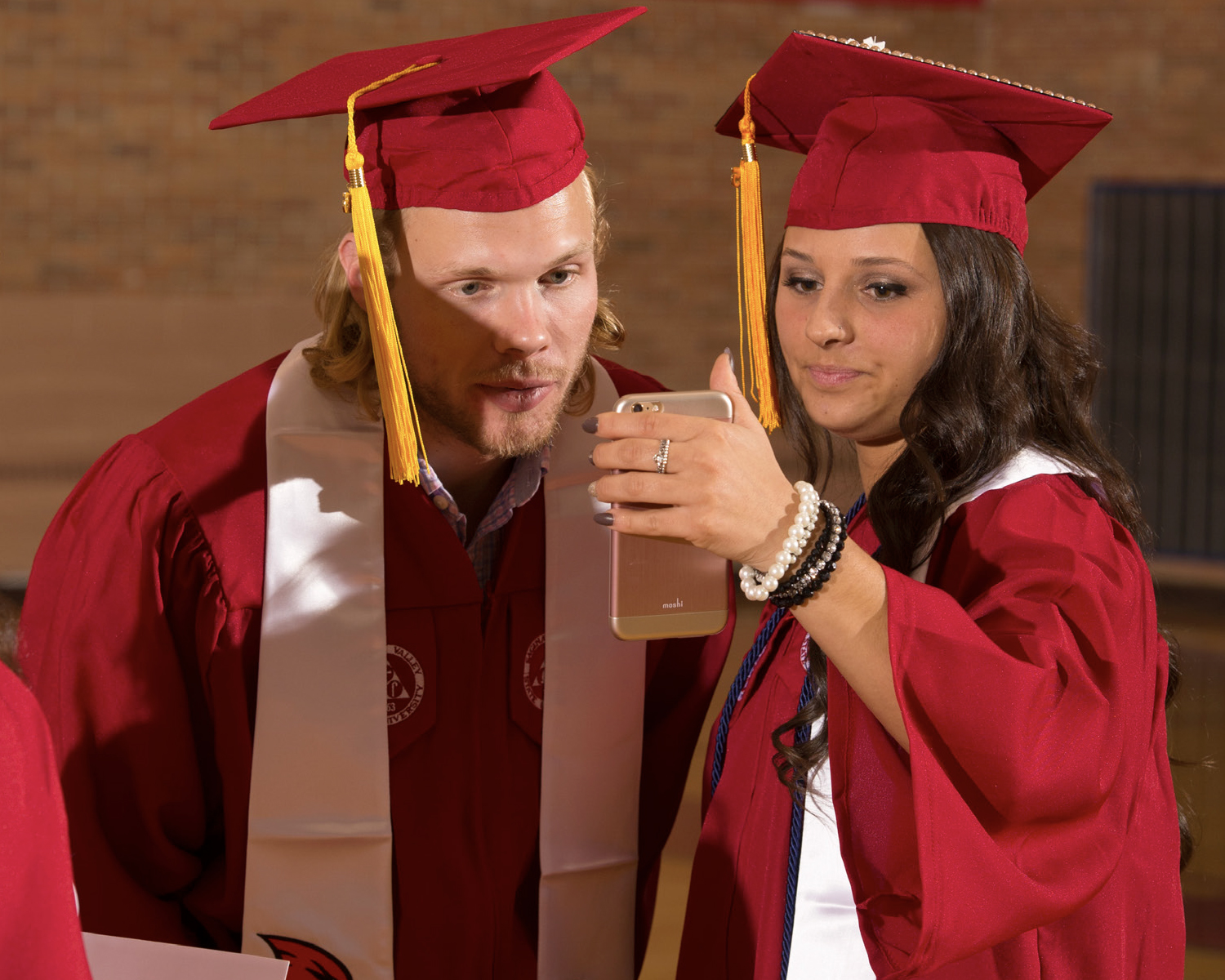
SVSU seeks to communicate effectively with a student body very connected to their cellphones.
